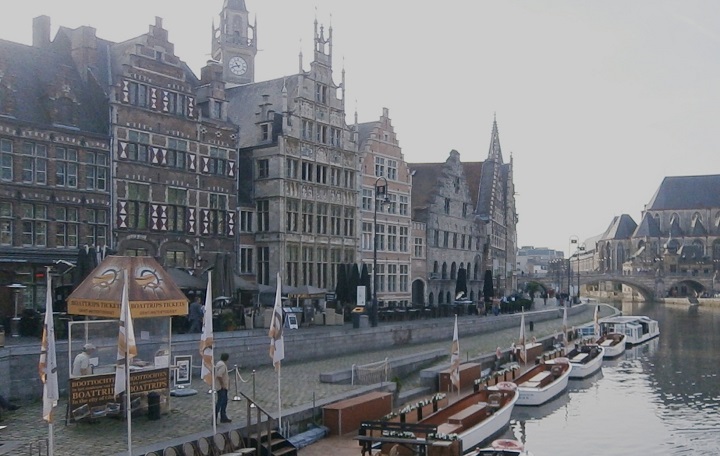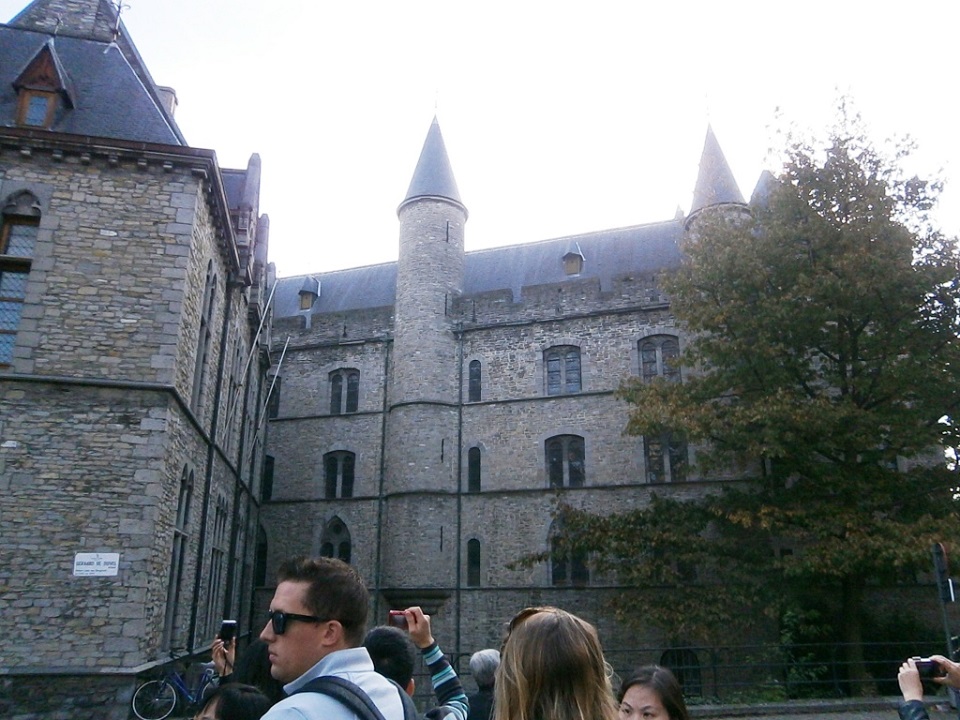Enjoying the medieval city of Ghent in Belgium

My husband Alex and I visited Ghent one fall morning, taking the bus from Brussels.
The capital of East Flanders in northwestern Belgium, Ghent derived its name from the Celtic word “Ganda,” which means “confluence,” as the city grew in the confluence of the Rivers Scheldt and Lys (or Leie).
During the Middle Ages, because of the periodic flooding of the two river banks, the soil was fertile and grass grew abundantly, making the lands ideal for herding sheep, which gave quality wool. Ghent then was a rich and powerful city, leading in wool, woven cloth and tapestries.
The castle of Gerald the Devil
After alighting from the bus, a tall, forbidding castle caught our attention. It was the castle of Gerald Vilain, a 13th century viscount's son who was also known as Geraard de Duivel, or Gerald the Devil.

He acquired the appellation because he was very dark, and had black hair all over his body. The castle used to house noblemen and knights, and in modern times was used in various capacities (including as a mental asylum). At the moment, the only portion open to the public is the archives room.
Far off, Alex and I noticed a grey brick tower, and we went over to investigate. It turned out to be one of Ghent’s famous towers, the Belfry. It had a large gold clock on one side, and had elegant towers on its four sides. Our guide book said that construction on the tower was completed in 1380, and that it stands 91 meters tall—the tallest belfry in Belgium.
Its bells were rung not just to mark the time but also during ceremonies and, during the Middle Ages, to warn the citizens of invaders. Now it stands solemnly in the square, a tall spire and an emblem of Ghent. Attached to it was an interesting rectangular building, the former cloth hall, where—during the Middle Ages when Ghent held sway over the world's cloth trade—wools were inspected and measured, and transactions were made.
A pregnant Eve
In that same square too, stands another of Ghent’s architectural treasures, the St. Bavo Cathedral. We had to crane our necks to see the ends of its spires.
Inside was its major attraction, the Ghent altarpiece, an 11-foot x 15-foot polychromatic tryptic panel painting with hinges named “The Adoration of the Mystic Lamb” done by Hubert and Jan Van Eyck during the 15th century. The front views were colorful renditions of Jesus as Christ the King in the center, flanked by the Blessed Virgin and John the Baptist.

One thing that struck me was the image of Eve at one end. Could it just be the obstetrician in me? She looked 24 weeks pregnant with her naked tummy protruding from her torso. Alex grinned and said yes, the guide book mentioned it, saying the painters wanted to show her fertility, thus the pregnant belly.
Just beside the St. Bavo Cathedral was the Dutch Royal Theater, with its curved balconies and colorful paintings on its facade.
As we walked on we felt as if we were in a medieval city. Even its City Hall looked like a fairy tale castle, with so many niches filled with images, both of religious and prosperous citizens.
The canals
When we reached the canal, I could only let out a gasp at the scene before us. Rows of medieval buildings lined the canal, with beautiful boats plying the waters. To one side, people were seated at the open air cafés, enjoying their morning libations. This gathering was probably what one of my Belgian poet friend described in a poem entitled “Geselligheid,” which he translated as “Social Togetherness.” We were in Graslei, a port to the right of the River Lys.
The one to its left, also lined by beautiful and evocative houses, was the Korenlei. During the Middle Ages, when Ghent was one of richest and most powerful cities in Europe, merchants constructed beautiful houses along the canals. There were also buildings to house grains, like corn and wheat, and precious herbs. These traders’ guilds exerted much influence over the lives of the people, as they controlled the economy. Many of the houses were restored and rebuilt for the 1913 Expo, but one could not point out which was “new” and which was old. The stepladder gables, the pointed pinnacles, the amber and red-hued façades: they were all breathtaking as the sun slowly rose above us.

We went to see the former meat halls too, where animals were slaughtered, sold and stored during the Middle Ages. It was a stone building, but inside, exposed wooden beams crossed the ceiling, and now legs of hams were hung, ready for sale.
The St. Nicholas Church too, did not fail to inspire. Begun in the 13th century and made of blue-gray stone, it had a tall tower (one of the three spires that mark Ghent) with four slender turrets below it. Inside were very high, vaulted areas where light streamed through softly.
A quick visit to the Gravensteen too, gave us an added medieval feel with its impossibly high walls. This Castle of the Counts was built in 1180 by Count Philip of Alsace, and through the centuries it had served so many functions, even as a prison for a time. Renovations were done and it has now become an attraction, especially its museum that contained torture devices, including a guillotine.
As we turned around the bend to reach a bridge, we beheld a canal scene that would mark our visit to Ghent, and it was enough just to stand there quietly, and enjoy the view: the river Lys, flowing gently through medieval houses, the waterscape framed by a burst of golden daisies, and white, red and purple petunias. — BM, GMA News




